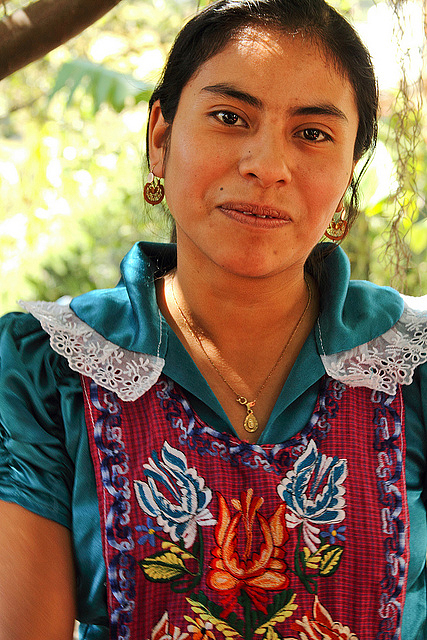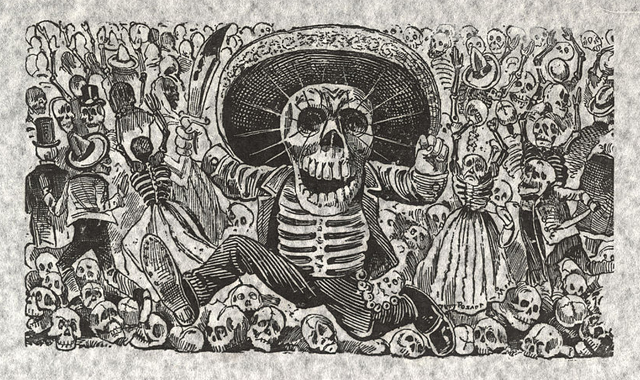The Hecho a Mano gallery in Santa Fe, New Mexico, is hosting a show featuring Zapotec print makers from Oaxaca City, Mexico. The owner of the gallery, Frank Rose, is determined to foster more interest in New Mexico for the print making folk art of Oaxaca. On October 20, the Albuquerque Journal published an enthusiastic article about the six artists whose works are displayed.

The show put together by Rose, titled “Grabados Oaxaqueños,” emphasizes the recent prints by contemporary Oaxaca artists, one of which is identified as a Zapotec woman. Mr. Rose explains that the flourishing of new, diverse, contemporary printmaking in Oaxaca dates from a teachers’ strike in 2006, when the protesters started using prints as symbols of their resistance to authority. The strike scared away many of the North American tourists who are attracted to the neo-colonial ambience of the city but it fostered a flourishing of the printmaking craft. A new generation of artists took up printmaking with a passion.
The development of the printmakers was fostered by two local groups—the Taller de Artes Plásticas Rufino Tamayo school and the Instituto de Artes Gráficas (IAGO), which was established in 1988 by Francisco Toledo, who passed away in September.

Gabriel Morac, one of the Zapotec artists featured in the show, said “IAGO was fundamental in the shift of the perception of graphic arts being a minor trade to being considered a discipline in its entirety.” She is from the Zapotec village that is famous for its weaving and rug making, Teotitlan del Valle, located 15 miles east of Oaxaca city. She attended the National School of Plastic Arts at the Universidad Nacional Autónoma de México (UNAM), where she studied printmaking.
Her art work—linocuts embossed with silver and gold leaf—is infused with Zapotec paradigms and symbols. “My art is a form of personal projection and reunion with myself, my background and history,” she said in a prepared statement.
Another female printmaker included in the show, Mirel Fraga, said that she is inspired by nature, animals, plants, life on and around the earth, magical objects, “and our relationship as human beings with all of them.” Her serigraph “Flora” might be understood as depicting a tropical forest or an underwater scene because of the way the image seems to flow off the canvas.
Ms. Fraga explained that there is a significant grouping of artists, designers, and illustrators who are working across disciplines to apply their ideas to different mediums such as paper, textiles, ceramics, books, paintings and clothing. “There is a big movement of artists with very different techniques, styles and themes showing their work in galleries, open studios and printing workshops now in Oaxaca,” she said. She didn’t say so but probably only some of the artists in the city she writes about are Zapotec.

Her partner, Alfonso Barrera, also represented in the show, depicts darker themes in his art, especially death. He says that death is viewed in different ways in Mexico than it is in the U.S. “I think the violence of the world and my country have an influence on many things that I make,” he says. Unfortunately, the Albuquerque Journal writer does not explore that idea any farther. Unlike Ms. Fraga, he does not really see his work as part of a larger movement.
The show at Hecho a Mano will also include works by three other artists from Oaxaca, Alberto Cruz, Daniel Hernández and Miguel Martinez. Mr. Rose, the owner of the gallery, emphasizes that the art scene in Oaxaca is very diverse and that the six artists he has chosen for the show are simply his personal favorites. He feels they are creating “extraordinary work.”
“Grabados Oaxaqueños” opened at Hecho a Mano, 830 Canyon Rd., Santa Fe, on October 25 and will run until November 24.